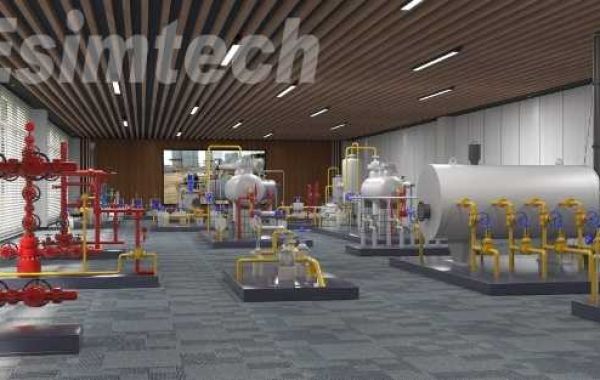The Process of Gas Production
- Exploration and Discovery:
The journey begins with exploration, where geologists and geophysicists gather clues about potential gas reservoirs. Seismic surveys, analyzing sound waves reflected from underground structures, help pinpoint promising locations.
- Drilling and Well Completion:
Once a promising site is identified, drilling rigs pierce deep into the Earth to reach the gas reservoir. This can involve drilling kilometers through rock and employing advanced techniques like directional drilling to access hard-to-reach reserves.
After reaching the reservoir, the well is completed by lining it with steel casing and perforating the rock formation to allow gas to flow into the wellbore.
- Production and Separation:
The gas, along with other fluids like water and condensate, naturally flows up the wellbore due to pressure. At the surface, a production facility separates the gas from these liquids.
Gas Processing: The raw gas may undergo further processing to remove impurities like hydrogen sulfide and carbon dioxide, making it suitable for transportation and consumption.
Liquid Separation: The separated water and condensate are treated and disposed of responsibly or recycled for other uses.
- Transportation and Distribution:
The processed gas is then transported to consumers through a vast network of pipelines. These pipelines stretch for thousands of kilometers, crisscrossing continents and delivering gas to homes, businesses, and power plants.
- Consumption and Utilization:
Finally, the gas reaches its destination, where it's used for various purposes:
Heating: Natural gas is a clean and efficient fuel for heating homes, buildings, and industrial facilities.
Electricity Generation: Gas-fired power plants generate electricity, powering our homes, businesses, and industries.
Industrial Processes: Natural gas is used in various industrial processes, from food and beverage production to manufacturing and refining.
Gas Production Simulators: Predicting the Flow of a Hidden Treasure
Optimizing gas production requires more than just brute force. Gas production simulators, and sophisticated software programs, come into play. These digital twins of gas reservoirs mimic the real-world behavior of gas flow, pressure, and interaction with rock formations.
By simulating various scenarios, engineers can:
- Predict gas production rates for different drilling and extraction strategies.
- Optimize well placement and production techniques.
- Identify potential risks and mitigate operational challenges.
- Minimize environmental impact by managing pressure and emissions.
These virtual models play a crucial role in ensuring efficient and sustainable gas production, making the most of this valuable resource.
Conclusion:
The journey of natural gas, from deep underground to our appliances, is a testament to human ingenuity and technological prowess. Understanding the complexities of gas production helps us appreciate this valuable resource and the efforts put into bringing it to our fingertips. With a focus on optimization, efficiency, and sustainability, the future of gas production holds promise for a cleaner and more secure energy future.








